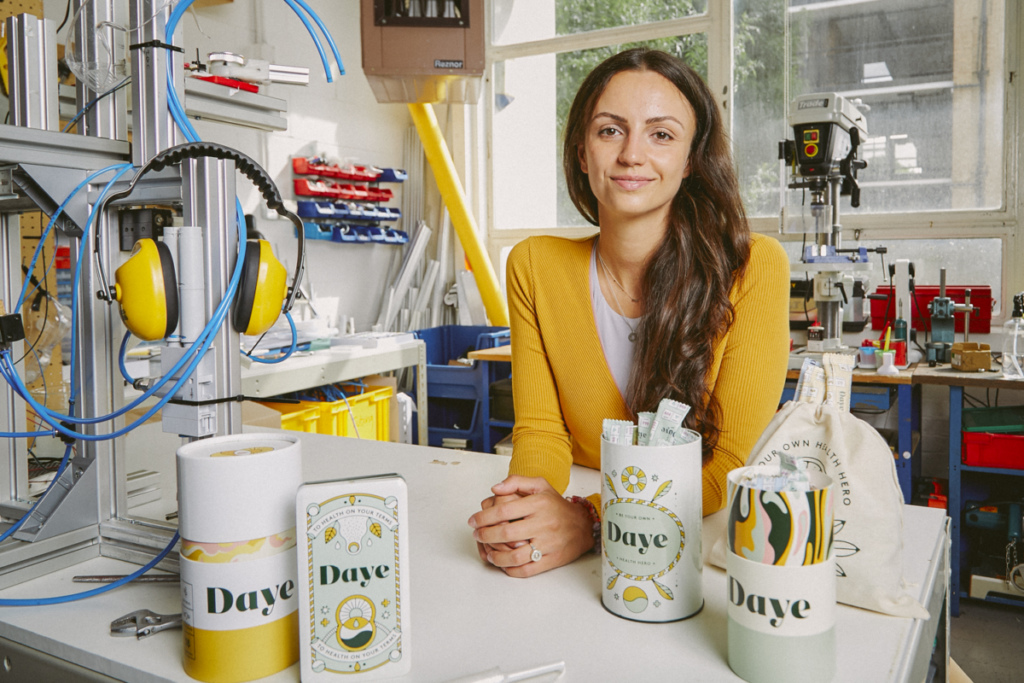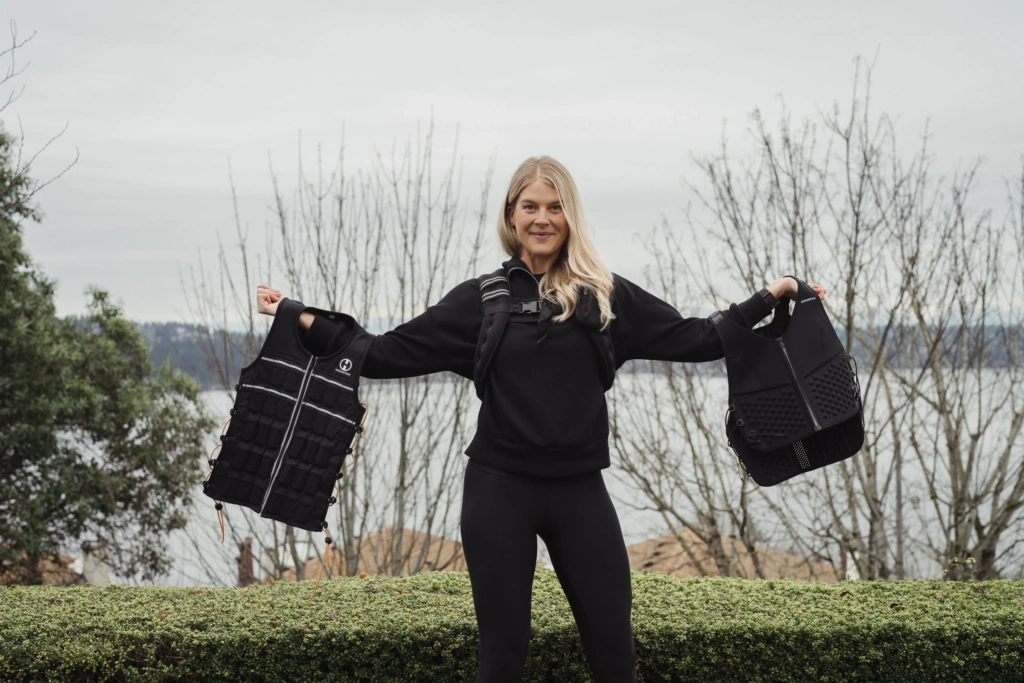How a simple checkout addition is helping women’s health brands increase conversions by 30% while making care more accessible.

If you’re building a health or wellness brand, there’s a good chance you’ve been leaving money on the table – literally billions of dollars that consumers are desperate to spend before they disappears forever at the end of the year.
Around 100 million Americans have Health Savings Accounts (HSA) or Flexible Spending Accounts (FSA), with approximately $150 billion sitting in these accounts. But here’s the startling part: Every year, between $4-8 billion in FSA funds expire unused, with the average FSA holder forfeiting $400 simply because they forgot to spend it or didn’t know where they could use it.
For women’s health brands specifically, this represents both a significant business opportunity and a chance to genuinely improve access to care. As healthcare costs rise and economic pressures continue to affect women disproportionately, enabling consumers to use pre-tax healthcare dollars can transform “I can’t afford that” into “I’ve been meaning to invest in this.”
In a recent Femtech Insider webinar in collaboration with Flex, we brought together Sam O’Keefe, CEO of Flex (which enables HSA/FSA payments for health brands), alongside two founders who’ve successfully implemented this payment method: Esther Sedgwick, CEO of The Carry (weighted vests designed for women’s bone health and fitness), and Valentina Milanova, founder of Daye (at-home gynecological diagnostics and care). Their conversation revealed why this is becoming essential infrastructure for health innovation – and why it’s far simpler to implement than most founders assume.
The Payment Method That Changes Purchase Behavior
When Sedgwick was preparing to launch the Carry’s weighted vests, she knew pricing would be a challenge. Premium materials, innovative design, and four patents pending meant higher price points than the cheap alternatives flooding Amazon. But when she polled her community about HSA/FSA payment options, the response was overwhelming: 63% had these accounts, 80% wanted to use them for their purchase, and 73% said it would make them more likely to pre-order immediately rather than wait.
“Our community initially had price expectations based on cheaper alternatives in the market,” Sedgwick explained. “When they saw our premium price point, they were excited about the product but hesitant. Enabling HSA and FSA payments helped convert a significant portion of those interested customers.”
The results speak for themselves. Brands accepting HSA/FSA payments through Flex consistently see:
- 50% higher average order values compared to standard credit card purchases
- Up to 30% increases in checkout conversion simply by adding another payment option
- 10% reduction in returns among HSA/FSA buyers
- 5-30% of total revenue coming from these payment methods, depending on category and marketing approach
Why such dramatic differences? Consumers genuinely view HSA/FSA funds differently than their regular bank accounts. These are pre-tax dollars specifically designated for health, creating a mental separation that changes purchasing psychology. Shoppers become more willing to invest in premium products, add extra items to their cart, commit to longer subscriptions, or finally purchase that higher-ticket item they’ve been considering.
What Actually Qualifies? More Than You Think
One of the biggest misconceptions about HSA/FSA eligibility is that you need FDA approval or that only traditional medical devices qualify. The reality is far more expansive.
Eligibility is determined by the IRS under Section 213(D) of the tax code.
Always eligible items include over-the-counter medications, prescription eyeglasses, sunscreen, first aid supplies, and traditional medical devices – the products consumers typically associate with these accounts.
But here’s where it gets interesting: Through a Letter of Medical Necessity, the IRS allows products and services that might seem like “wellness” rather than “healthcare” to qualify when recommended by a healthcare provider for treating or preventing a specific condition.
This opens the door for:
- Exercise equipment designed for specific health outcomes (like the Carry’s weighted vests for bone density)
- At-home diagnostic devices (like Daye’s gynae health testing)
- Supplements targeting medical conditions
- Preventative care products with clinical benefits
- Telehealth and clinical consultation services
- Coaching programs focused on managing health conditions
“We initially assumed FDA approval was mandatory,” Milanova shared about Daye’s journey. “I was reluctant to explore HSA/FSA payment integration because I anticipated a complex, time-consuming process. What surprised me most was how straightforward it was, and how comprehensively Flex handled the eligibility work.”
The key is demonstrating clinical or therapeutic benefit rather than general wellness. This is where Flex’s expertise becomes invaluable – they handle the entire eligibility review process, working with brands to position products appropriately and securing the necessary approvals.
The Accessibility Imperative
While the business case is compelling, there’s a deeper reason women’s health brands should prioritize this: Genuine barriers to access.
“In gynecological health in the US, we’re seeing an extreme proliferation of gynecological health deserts,” Milanova explained. “Making at-home diagnostic services and at-home treatment services like the ones we offer at Daye accessible is important given the current societal and political climate.”
With reproductive healthcare access increasingly restricted across the US, with persistent gender health gaps in research and treatment, and with women bearing disproportionate economic pressures, anything that makes innovative women’s health solutions more financially accessible matters enormously.
The average person has between $3,000-8,000 in their HSA or FSA accounts annually – funds specifically designated for healthcare that often sit unused while women delay needed care due to cost concerns.
For brands, this isn’t just about capturing revenue before funds expire – it’s about connecting women with solutions they genuinely need but might not otherwise be able to access.

Implementation: Easier Than You Think
What stops many founders and brands from moving forward is the assumption that adding HSA/FSA payments requires months of regulatory work, complex technical integrations, and significant team resources.
The reality? The Carry implemented Flex in under a week with just two co-founders and zero technical staff. Daye onboarded multiple products with multiple SKUs each in less than six weeks while running a complex, fast-growing business.
The timeline depends primarily on your e-commerce platform:
Shopify, WooCommerce, or Shopline users can integrate via Flex’s existing apps with minimal technical lift – often within days.
Custom platform brands need API integration, which takes slightly longer but remains manageable even for small teams.
What Flex handles:
- Product eligibility review and approval process
- All regulatory compliance and documentation
- Letter of Medical Necessity generation and delivery
- SKU-level qualification management (required by IRS)
- Payment processing and fund verification
“What impressed me most was how thoroughly Flex understood our products and could articulate their clinical benefits and health outcomes,” Milanova shared. “The level of support we received made the entire process seamless.”
Strategic Marketing: Two Major Opportunities Per Year
Consumer awareness around FSA/HSA spending follows predictable patterns, creating distinct strategic opportunities.
The Year-End Push (November-December)
Right now, millions of consumers are suddenly realizing they’re about to lose unused FSA funds. These aren’t your typical careful researchers – they’re people with hundreds or thousands of dollars that will vanish in weeks, actively searching for eligible products to purchase.
Sedgwick shared a perfect example: “A former colleague recently told me she had $1,700 remaining in her FSA that she needed to spend before year-end. She’d already purchased our vest and was actively seeking other eligible products for her family. These consumers have significant purchasing power and are motivated to act quickly.”
Tactics that work:
- Prominently feature HSA/FSA payment badges in paid advertising
- Target cold traffic with “spend your FSA funds” messaging
- Emphasize urgency around the December 31 deadline
- Use “free money about to expire” positioning
- Reduce friction with clear eligibility messaging
The Carry started testing paid advertising with FSA/HSA messaging specifically for this window, targeting consumers who may not have been aware of their brand but are actively seeking solutions.
The January Refresh (Q1)
O’Keefe called early January the wellness industry’s “second Super Bowl” – potentially as important as Black Friday and Cyber Monday for health brands.
Why? Fresh annual contributions just refilled accounts, consumers have heightened awareness from their year-end spending, New Year’s resolutions drive health-focused purchases, and open enrollment decisions are fresh in people’s minds.
Year-Round Integration
Beyond these seasonal pushes, successful brands integrate HSA/FSA naturally into their standard customer journey:
- Payment badges on product pages and checkout
- FAQ sections explaining the option
- Email flows and lifecycle marketing mentions
- Regular social content

What Marketing Support Looks Like
One concern founders often raise: “I’m already stretched thin. I can’t take on another marketing channel.”
But Flex doesn’t just provide payment processing – they also provide comprehensive marketing support to help brands succeed:
Marketing resources include:
- Branded marketplace featuring eligible products
- Newsletter marketing to previous HSA/FSA users
- Growing social media presence and community
- Ready-made creative assets for ads, banners, and checkout
- Email templates for quick customization
- FAQ copy and product page messaging
- Seasonal messaging updates (year-end urgency, Q1 refresh)
Rather than adding to your workload, Flex is designed to reduce it while opening a new revenue channel.
Getting Started with Flex
If you’re ready to explore HSA/FSA payments for your brand, the process is straightforward.
Visit withflex.com to browse eligible categories and fill out a contact form. You can see examples in the marketplace at withflex.com/shop, or check out this Flex case study with nursing and maternity essentials brand Kindred Bravely.
What to have ready:
- Your e-commerce platform details
- Approximate number of SKUs to enable initially
- Any FDA approvals or clinical data (helpful but often not required)
Why This Matters Now
With year-end approaching, billions in FSA funds are about to expire while women’s health brands are keen to improve ROI on customer acquisition and women themselves delay needed care due to cost barriers.
Enabling HSA/FSA payments through Flex addresses all three simultaneously: It captures funds that would otherwise vanish, it dramatically improves unit economics through higher AOV and conversion rates, and it makes innovative health solutions more accessible.
“Working with partners who genuinely understand the women’s health landscape and are committed to improving access makes a meaningful difference,” Milanova reflected. “This is infrastructure that supports both business sustainability and mission-driven impact.”
And that’s ultimately what makes this more than just a payment method. In a landscape where women’s health continues to be underfunded, underserved, and under-prioritized, every tool that improves access while strengthening the business model of women’s health innovators deserves serious consideration.
The barriers are lower than you think. The timeline is faster than you expect. The impact – both on your business and on the women you serve – is significant.Whether you’re ready to capture the year-end opportunity or planning for the January refresh, Flex can help you get started today.
Want to learn more about implementing HSA/FSA payments for your brand? Visit withflex.com



